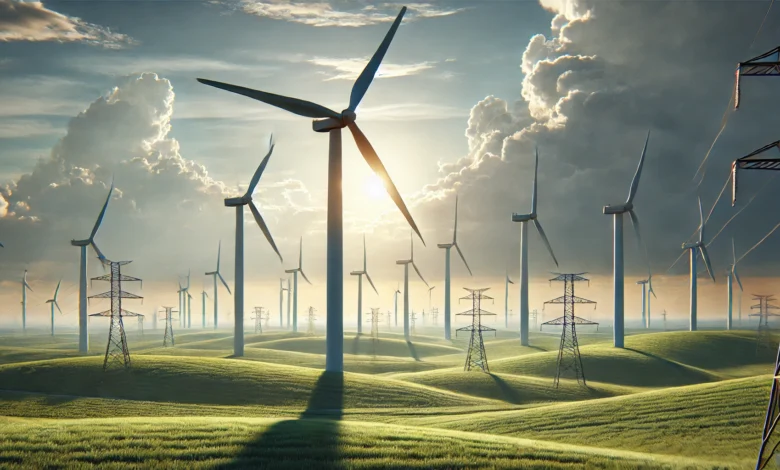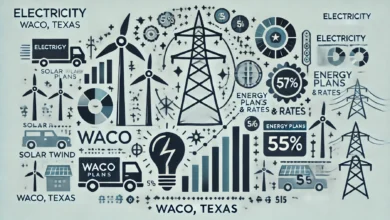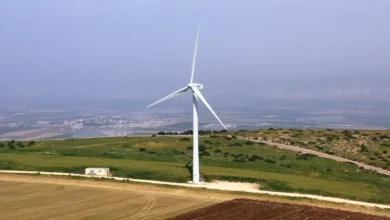The Role of Wind Energy in Combating Climate Change

As we experience the crisis of climate change more and more, every breeze presents a possibility to move ourselves closer to a better future. Wind energy was a niche technology that has since grown to be globally recognized as an important technology in the fight against climate change. But how exactly is the capturing of the wind cooling a heating planet?
Contents
- 0.1 Wind Energy Reduces GHG Emission
- 0.2 Wind Power Compared to Fossil Fuels
- 0.3 Wind Energy is Growing Globally
- 0.4 Offshore vs. Onshore Wind Farms
- 0.5 Technological Advances Enhancing Wind Energy
- 0.6 Environmental Benefits Beyond Directly Reducing CO₂ Emissions
- 0.7 Barriers to Wind Energy Growth
- 0.8 The Fight Against Climate Change and the Future of Wind Energy
- 1 Frequently Asked Questions (FAQ)
Wind Energy Reduces GHG Emission
Fossil fuels account for the majority of global warming. The combustion of coal, oil, and natural gas turns the atmosphere into a massive repository of carbon dioxide, a GHG that traps heat and disrupts natural systems. Wind energy generates electricity and does not emit GHG when harnessing electricity.
According to the Global Wind Energy Council (GWEC 2025) report, globally wind energy deployment has resulted in an estimated 2.1 billion metric tons of prevented CO₂ emissions — this has been equated to taking 450 million cars off the road in a year. More than an impressive statistic, and importantly, this represents real effects, in cleaner air, healthier community, and a decreasing temperature rise.
Wind Power Compared to Fossil Fuels
| Energy Source | CO₂ Emissions (g/kWh) |
|---|---|
| Coal | 820 |
| Natural Gas | 490 |
| Wind | 9 |
(Data Source: GWEC 2025 Update)
Countries looking to hit their climate targets aren’t surprised to know that they need to invest in wind power.
Wind Energy is Growing Globally
In 2025, global installed wind capacity surpassed 1000 gigawatts (GW) for the first time; which is an incredible milestone compared to recent years of steady increases of capacity.
The world’s major economies are trying to expand their fleet of wind energy projects as quickly as possible; renewables need to be the backbone of future energy systems. For example, in Texas a common sight while driving on Highway 87 tends to be acres of turbines slowly turning in the distance. Locally, it just becomes part of the visual landscape – even a sense of pride.
Top Countries Investing in Wind Energy
- China: more than 430 GW installed; leading worldwide in offshore development.
- United States: surpassed 160 GW in 2025; aggressive offshore plans.
- Germany: 68 GW; deeply integrating wind into national grids.
- India: moving quickly on its evolution to 70 GW; completing large developments.
Offshore vs. Onshore Wind Farms
Offshore wind farms — especially during the change to the coasts of Europe and Asia — are all important.
- Offshore turbines can generate about double the electricity per unit than onshore.
- Floating offshore platforms are releasing large acreage for development.
Nothing still compares to the cheap onshore wind, but in many land-abundant countries, the technology is maturing.
To better understand the differences between offshore and onshore wind farms, check our guide: Onshore vs Offshore Wind Farms.
Technological Advances Enhancing Wind Energy
Technological advances are going to higher levels of energy with wind energy than ever before.
Turbine Efficiency Innovations
- Ultra-large rotors (up to 250 meters) are developing greatly with even the slowest winds at higher altitudes.
- Instead of adopting just any ray of wind, blades are taking inspiration from the fleshy fins of humpback whales with better lift and little noise.
- New AI-based software that optimizes maintenance intervals has improved uptime nearly 15%.
Floating wind farms, such as the Hywind Tampen project in Norway, represent how we are now able to generate clean energy from deep-water locations successfully.
Floating Offshore Wind Farms
By 2025, floating offshore deployable projects were contributing nearly 10 GW of capacity across the globe — this is predicted to increase to 40 GW by 2030.
These new technologies will allow us to access the stronger winds offshore and well beyond traditional shallow shelf depths.
Environmental Benefits Beyond Directly Reducing CO₂ Emissions
In addition to reducing emissions, wind energy has broader environmental benefits.
Land Use and Biodiversity Impacts
- Wind turbines use only 2–5% of a wind farm, allowing for continued agriculture and livestock projects to be permitted at the same time.
- New siting standards avoid critical pathways for bird and bat migration, reducing the ecological impacts.
For example, farmers in rural Iowa consistently plant corn and soybeans right to the base of a wind turbine, allowing them to optimize their land use while producing clean energy.
Water Benefits of Wind Energy
Traditional power plants use billions of gallons of water annually to cool during electricity production.
On the other hand, wind turbines utilize almost no water.
With climate change increasing the risks of drought for everyone on the planet, this is a significant advantage.
Barriers to Wind Energy Growth
There is significant potential for wind energy, but wind energy is not without its barriers.
Intermittency and Grid Integration
Wind is variable. Some days the wind blows agreeably, and some days, the wind barely interrupts the air.
To overcome this barrier, energy storage, smart grid management, and a variety of renewable sources are being implemented rapidly.
Experts estimate that with wind coupled with 25% battery storage, grid reliability could exceed today’s oil and gas grid reliability.
Community Acceptance and Visual Impact
Some communities are against new wind developments due to the perception of a negative impact on the beauty of the local landscape, in addition to issues surrounding noise and wildlife.
Open communication, community investment programs, and carefully siting wind projects have all helped build a local support base.
The Fight Against Climate Change and the Future of Wind Energy
Overall, the future of wind energy is on an upward trajectory.
If global trends remain unchanged, GWEC’s 2025 prediction cites that wind generation could meet greater than 35% of electricity needs within their top markets by 2040.
Wind energy will continue to expand, due to ongoing innovations such as airborne wind energy systems and advancements in blade materials.
As one energy professional, who stood under a large turbine and felt the vibrations of renewably generated energy created from nothing, said — it is hard to imagine that the future of wind energy doesn’t power more than home energy and hopefully becomes the energy that transforms our entire energy paradigm.
Frequently Asked Questions (FAQ)
How effective is wind energy in tackling climate change?
Wind energy is extremely effective while it displaces billions of tons of carbon emissions each year and conserves natural resources.
Can wind energy completely replace fossil fuels?
Wind energy is unlikely by itself to replace fossil fuels but combined with solar, hydro, and advanced storage, it could supply most of the global energy needs sustainably.
What will be the biggest roadblocks for wind power to grow?
Intermittency, grid adaptation, and public acceptance remain roadblocks, but solutions to address them are scaling rapidly.
What is the importance of offshore wind energy?
Offshore resources typically possess much stronger and more consistent winds, enabling higher energy production — crucial for densely populated areas.
How many gallons of water do wind energy plants save annually compared to conventional plants?
Wind turbines save hundreds of millions of gallons annually, as they do not require cooling water unlike coal and nuclear plants.



